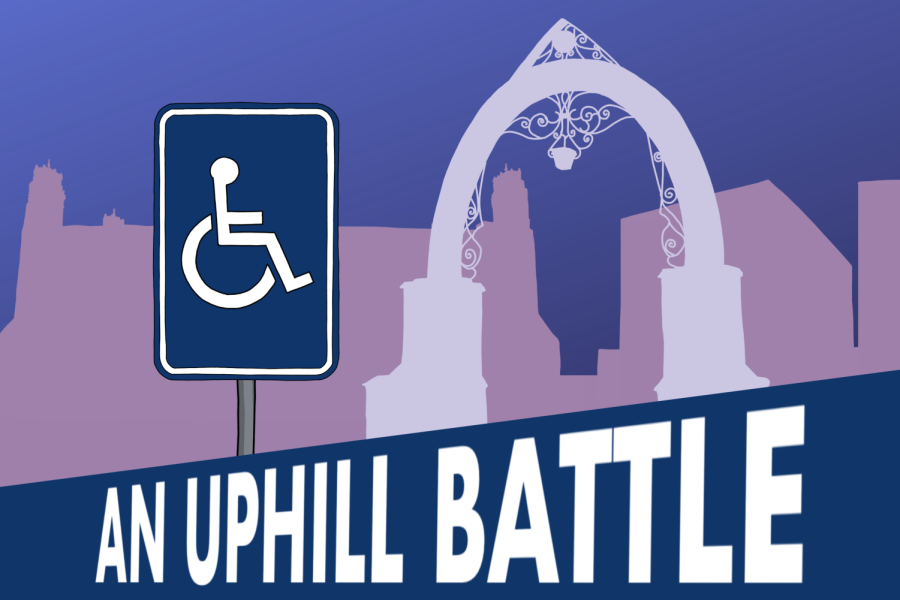In Focus: Physical accessibility limits students on Northwestern’s Evanston campus
February 9, 2023
After his wheelchair flipped over on one of Northwestern’s uneven sidewalks last spring, Alec Cabacungan broke his hip.
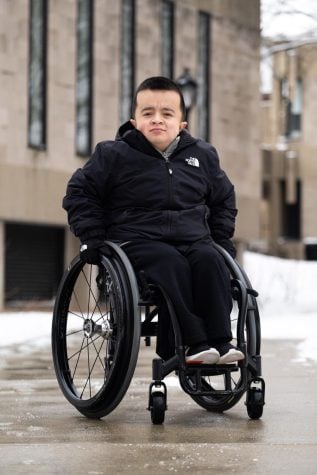
The Medill junior has osteogenesis imperfecta, also known as brittle bone disease. The condition causes Cabacungan’s bones to break easily, making getting around difficult. NU’s bumpy, uneven terrain is unforgiving for those with physical disabilities — and the problems with the sidewalks are only the tip of the iceberg when it comes to accessibility concerns on campus.
This was not the first time Cabacungan had an experience like this. He said he took a leave during Winter Quarter 2022 after his wheelchair flipped during break last fall.
“I was just so excited to come back. And then I flipped over again,” he said. “I had to go through physical therapy again, which sucked.”
Cabacungan said problems with navigating campus have been the most frustrating part of his time at NU. And he’s not the only student facing these issues.
Students with physical disabilities make up 3% of students registered with AccessibleNU — the University’s accessibility office — according to its 2016 accessibility council report. Cabacungan and others said the University is not doing enough to remove access barriers around campus for those students.
From challenges communicating with administration to difficulty entering buildings and attending class, he said it has been an uphill battle to find justice — and belonging — on campus.
“On top of dealing with the social pressures of college, and on top of the academic stress with each class, it can get extremely stressful also having to worry about what’s compliant and what’s accessible,” Cabacungan said.
Navigating campus
Adrian Ray-Avalani, a second-year Ph.D. candidate, said he came to NU excited to study linguistics and be on a new campus.
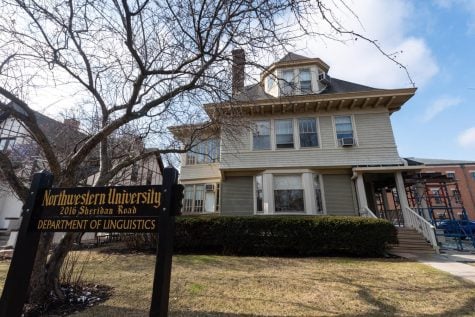
However, he quickly realized many buildings on campus are not navigable as a wheelchair user. Ray-Avalani said his most glaring issue is the inaccessibility of the linguistics department. The building, located on Sheridan Road, does not have an elevator.
When Ray-Avalani brought this up to University administration, ANU quickly gave him a private office so he could meet with faculty as needed. Ray-Avalani said while he has been “more or less” functionally accommodated, he still struggles emotionally.
“I don’t like it,” Ray-Avalani said. “I just don’t like the idea that the official department building is not somewhere I can get (to).”
With the main campus covering more than 230 acres, NU has a lot of terrain and a variety of buildings. But without proper infrastructure, students with mobility conditions often face challenges accessing them.
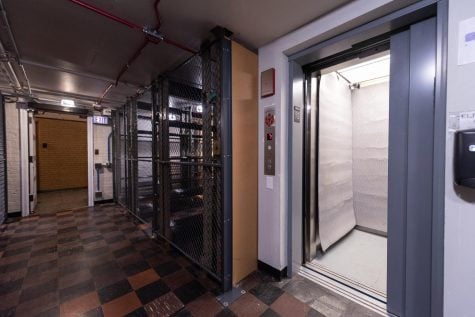
Cabacungan said for him, Norris University Center, Deering Library and Locy Hall are some of the least accessible buildings on campus.
During his first in-person quarter, Cabacungan said he struggled to learn which buildings were accessible and which were not. He recalled one incident that discouraged him from returning to Deering.
“Someone at the student help desk at Deering told me there wasn’t an elevator in the building, so I never went back there,” he said. “And then I found out in the spring that there was an elevator, so that was frustrating.”
At Norris, steep hills require immense effort to enter the facility, he said. Even though there is an accessible entrance on the north side of the building, Cabacungan said accessing it is difficult because he comes from South Campus. He must cross a street to use the accessible entrance.
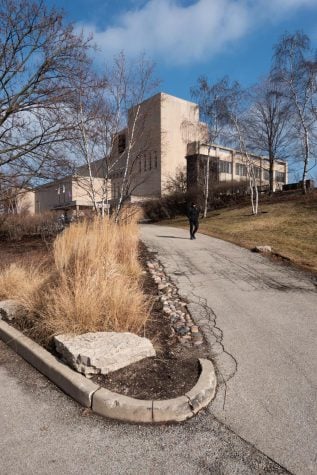
Streets and sidewalks throughout campus are not any easier to cross. Cabacungan said the uneven pavement often forces him to take alternative routes that are often longer and more inconvenient.
Cabacungan said he does not blame the University for the natural elements that make navigating campus difficult. However, he wishes NU would do more about the infrastructure it has the ability to change.
“You can’t do anything about the natural hills, so whatever — keep the hills,” Cabacungan said. “But just fix the sidewalks, fix the buildings, fix the policies. I mean, it’s head to toe.”
‘A segregated environment’
ANU features three federal laws related to accessibility on their website: Section 504 of the Vocational Rehabilitation Act of 1973, the Americans with Disabilities Act of 1990 and the ADA Amendments Act of 2008.
The ADA aims to prevent discrimination against those with disabilities, according to its website. Title III of the act requires all buildings erected after Jan. 26, 1992 to be “readily accessible” by meeting certain building specifications. The 2010 Standards for Accessible Design added additional guidelines for buildings constructed after March 15, 2012, such as the steepness and edge protection of provided ramps.
However, most of NU’s buildings were constructed before 1992. Though NU Facilities has completed a number of renovations that improve access in older buildings, some have not been updated in decades.
One of these buildings is Locy. The building’s multiple entrances require climbing stairs, and there’s no elevator inside, so students must walk up and down stairs to access classrooms in its four stories.
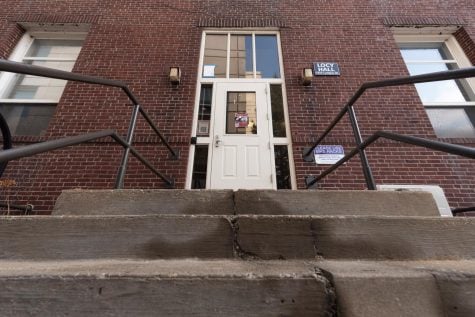
ANU will relocate a class if a student is unable to physically access the classroom. During Spring Quarter 2022, Cabacungan said a professor had to move one of his final exams from Locy to Kresge Hall.
More classes have been moved out of Locy for accessibility reasons than any other building, according to a 2016 article published in North by Northwestern.
The ADA’s Safe Harbor Provision states buildings constructed before 1992 that do not comply with either the 1992 or the updated 2010 standards must be modified when “readily achievable.”
Several factors inform whether renovations are seen by legal authorities as “readily achievable” for an organization, including financial capability, the building’s historical significance and the feasibility of the construction, according to Clinical Director of the Nova Southeastern University College of Law Disability Rights Clinic Matthew Dietz. Generally, the more financial resources an organization has, the more it is expected to remove barriers.
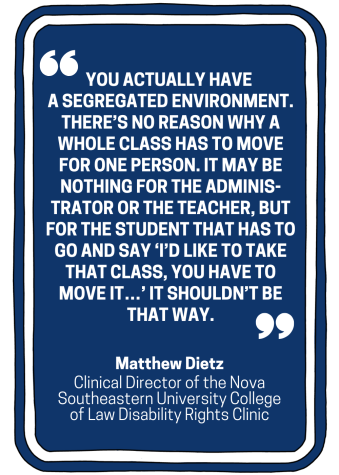
Dietz said under ADA Title III, NU is required to provide an accessible entrance to every building. Locy, in that case, would not be considered compliant due to its lack of a ramp.
Dietz said while NU’s policy to move classes allows disabled students to attend class, it is still discriminatory and does not comply with the law in cases where disabled students cannot physically enter a building.
“You actually have a segregated environment,” Dietz said. “There’s no reason why a whole class has to move for one person. It may be nothing for the administrator or the teacher, but for the student that has to go and say ‘I’d like to take that class, you have to move it…’ It shouldn’t be that way.”
Laura Conway, associate director of NU ADA compliance and ADA coordinator for the Office of Equity, did not comment on which of NU’s buildings — if any — were not ADA compliant. Projects are “ongoing,” she wrote to The Daily.
“The Office of Equity, Facilities and ANU reply to known issues as they arise, in addition to conducting systemic reviews and larger projects as needed,” Conway added.
Despite these “larger projects,” Cabacungan said he does not feel the University is doing all it can to improve physical accessibility for students.

(Seeger Gray/Daily Senior Staffer)
Just because a building is technically compliant does not necessarily mean it is fully accessible, Cabacungan said.
“They’re doing the bare minimum,” he said.
Kresge underwent a major renovation that was completed in 2017. During this renovation, many of its classes were moved to Locy, creating a barrier for students who could not access the building. Alexander Darragh, NU’s vice president for facilities, wrote to The Daily that Kresge is part of the University’s “strategic” set of renovations by the University to improve campus access.
While Kresge is now far more accessible than other buildings, Cabacungan said it still has its issues.
The wheelchair ramp at Kresge’s main entrance includes a sharp turn that does not have a railing, according to Cabacungan. This could be dangerous for wheelchair users, he said. In the event they are unable to stop the chair, Cabacungan said the lack of railing could cause the wheelchair to flip if it comes too close to the ramp’s edge.
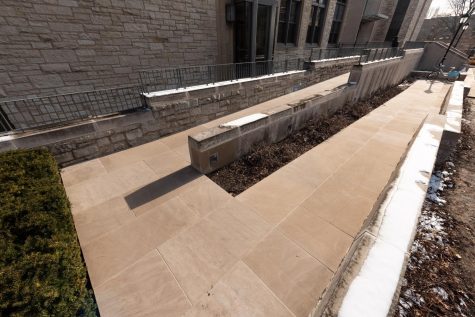
Ray-Avalani also said renovation and construction sometimes cause major barriers to navigating campus.
Last fall, the University worked on construction outside Allison Hall, so students had to take an alternate path to cross Sheridan Road to the dining hall. Cones delineated a path around the construction, but Ray-Avalani was not able to use the alternate path since it required stepping over a curb.
“I’m lucky in that I can stand up and pull my chair over a thing, if necessary,” he said. “But not everyone (in a wheelchair) can do that.”
Administrative barriers
While ANU and other campus offices are open to assist students, some with physical disabilities say they have struggled to figure out where to go for help.
Ray-Avalani said he has faced some confusion regarding who to reach out to if he encounters an inaccessible part of campus. Three NU offices — ANU, Facilities and the Office of Equity — are responsible for different elements of accessibility.
According to Conway, the Office of Equity is responsible for providing guidance on physical access requirements. Facilities is responsible for removing structural barriers that may prevent NU community members from accessing parts of campus, while ANU coordinates academic accommodations.
Despite these offices’ various functionalities, Ray-Avalani said he has never been directed to the Office of Equity or Facilities, leading to unclear messaging for students who need access to NU’s resources.
Accessibility issues do not only affect students with permanent mobility challenges. Students with temporary injuries may not know who to turn to when having difficulty getting around campus.
According to ANU, temporary medical conditions are “generally not regarded as disabilities” because of the degree of impairment. Its website directs students with “academic concerns that arise related to temporary conditions” to Northwestern Medicine Student Health Service Evanston.
After injuring her leg in October, Medill freshman Emma Manley said she needed crutches. The injury made it difficult for her to navigate the school, she said, especially in buildings like Allison that don’t have an entrance elevator readily available to students who are not registered with ANU.
According to Manley, she didn’t register with ANU because she was confused about who to reach out to.
“That information isn’t really widely available,” Manley said. “Even when there is an elevator, (it is) still more difficult to use. I think for a lot of things, the lesser of two evils is to struggle with the stairs.”
Manley lives in the Communications Residential College. Because she lives on the only floor with elevator access, she said it was easier to enter and exit the building with her injury.
Her friend, Weinberg sophomore and CRC President Sarah Wachs, was not as lucky. Wachs broke her ankle last year while living on the third floor of CRC.
Wachs’ floor did not have elevator access, so she said she had to “hop” up the stairs. Even though she made the University aware of her injury, she said it did not offer her temporary housing accomodations.
“She had to just struggle and add in like 20 minutes to her day every time she wanted to leave and come back,” Manley said.
‘The bare minimum’
Cabacungan said he goes out of his way to meet and befriend other students in wheelchairs because he appreciates the camaraderie and ability to bond over shared experience.
According to the Centers for Disease Control and Prevention, mobility conditions are the most common form of disability, affecting one in seven adults. However, finding other physically disabled students on campus can be a challenge.
This ratio of individuals with disabilities is not reflected in the student population registered with ANU. The University’s Accessibility Council Report, which was last published in 2016, reported that 3% of all students registered with ANU have mobility-related impairments.
This is about 27 students, based on the 2016 statistics listed in NU’s 2020-21 Diversity and Inclusion Report. ANU declined to provide a more recent estimate of the number of students with physical disabilities currently enrolled at NU.
“In the way that they have Black students association or LGBT students association, some universities have a disabled students association,” Ray-Avalani said. “I know a couple of other grad students with mobility issues, but I would really love for there to be more of a community.”
Cabacungan said other students often treat him differently, talking to him more slowly or acting as though he cannot keep up in a conversation.
Friendship with these students is different than those with people who understand his disability, which he said is another reason he wishes there was a disabled community on campus.
“I don’t think a lot of these smarter, academically-talented kids have a lot of experience with people with disabilities,” Cabacungan said. “I always try to say a joke or make fun of myself to break the ice.”
Cabacungan described a negative feedback loop: Since the number of students with physical challenges enrolled at NU is so small, University administration does not prioritize fixing the problems affecting these students. But because these issues still exist, students with mobility conditions do not feel comfortable coming to NU, he said.
Cabacungan said he believes the only point at which more students with physical disabilities will enroll in the University is when the administration prioritizes efforts for inclusion.
“A lot more students in high school in wheelchairs would come to Northwestern (if it) was more accessible,” Cabacungan said.
Associate Dean of Students and ANU Director Jill Sieben-Schneider said the number of students at NU with physical disabilities was “in line” with peer institutions.
But unlike Cabacungan’s experience at NU, University of Illinois Chicago sophomore Hanna Codreanu said she has seen “quite a few” people around her campus with mobility conditions and in wheelchairs, both manual and electric.
UIC’s emphasis on disability studies and inclusion of a well-established disabled community was one of the main reasons Codreanu, who like Cabacungan also has osteogenesis imperfecta, wanted to attend the school.
“I saw that (UIC) had a disabilities and human development program, and that really caught my attention, especially since they have a disability cultural center,” Codreanu said. “I always look to schools where you see physically disabled people, and I just wanted to be part of a community.”
Codreanu said she was always apprehensive that the university she would attend might not be accessible. But after looking into UIC, she said she realized it was the best place for her.
While Codreanu said that UIC’s accommodations are far from perfect, they are some of the best she has had access to.
“Even in high school, I didn’t get the accommodations I get right now,” she said.
While NU was Cabacungan’s first choice, he did not feel the same excitement over the University’s accessibility policies. He said he had a role model in high school who was happy Cabacungan got into his “dream school” but had always encouraged him to go to UIC.
According to Cabacungan, the friend said he might struggle at NU. Though he visited the campus and noticed its flaws, Cabacungan said his younger self did not care.
“I wish I had listened to him a little bit more,” he said. “I don’t know if I would’ve changed where I had gone, but I wish I would have taken that into consideration.”
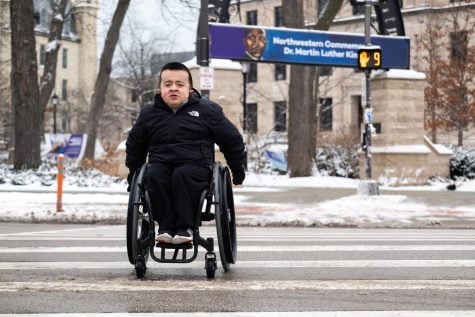
Though Cabacungan recognizes NU’s faults, he said he is not giving up.
“I have a goal to make Northwestern accessible and to use Northwestern as an example for the rest of the country,” Cabacungan said. “Unfortunately, this is a nationwide problem.”
Though he said some University officials have said they wanted to help, he generally has not seen any major changes since his arrival at NU.
Cabacungan said that will hopefully change now. He has been working with ANU since December to help survey buildings for potential accessibility issues. Though he said it is not yet clear what changes the University will make based on the survey results, Cabacungan is working to let administration know how to improve conditions for students with mobility-related disabilities.
“The physical obstacles I have encountered on campus put me in an unfair situation,” Cabacungan said in a letter sent to University administrators last April. “I will not get to experience a 100% accessible Northwestern campus as an undergraduate student, but I hope one day someone else can.”
Email: NicoleMarkus2025@u.northwestern.edu
Twitter: @nicolejmarkus
Related Stories:
— In Focus: Students with chronic illnesses feel unsupported by University services

